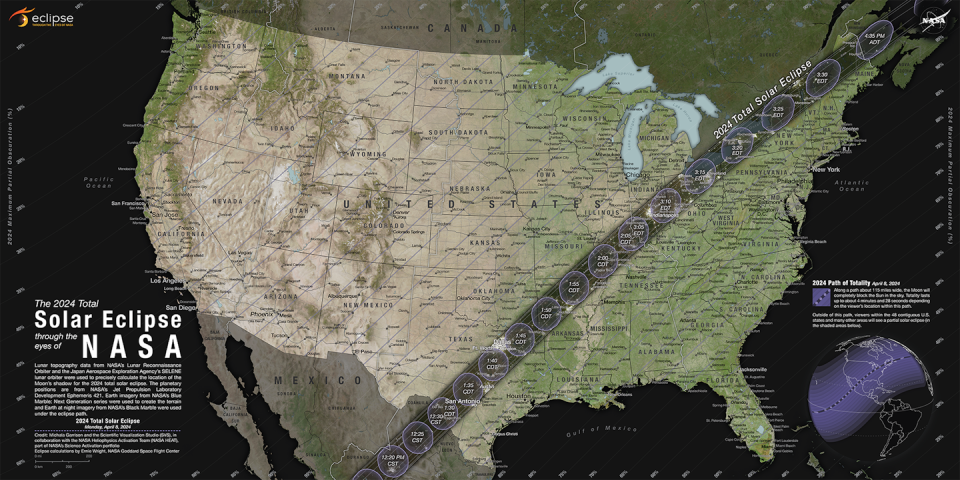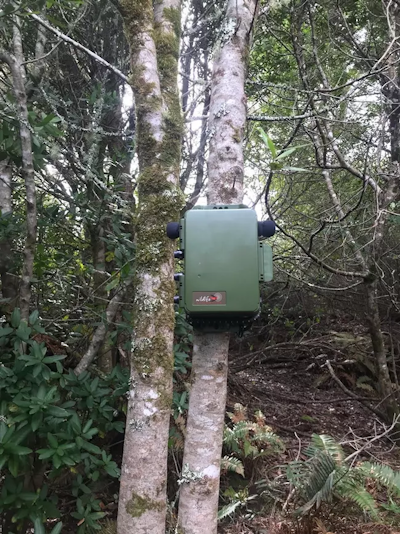The total solar eclipse on April 8, 2024 coincides with an exciting time for wild birds. Local birds sing for mates and fight for territories as they prepare for their annual chance to breed.
Tens of millions of migratory birds will follow the path of totality, and they migrate mostly at night.
Because birds use light to tailor their behavior to their environment, scientists like us have many questions about how they will respond to the solar eclipse. Will they pause their fighting and lovemaking and move into bedtime-like behavior? How about a nocturnal animal like an owl or those nocturnal migrants: will they come rustling out of their roosts before they realize it’s not night?
As behavioral biologists at Indiana University, we conduct research on wild-breeding birds with the goal of understanding why animals behave the way they do in response to environmental challenges and opportunities. For the 2024 eclipse, our team is launching a new project and developing an app. If all goes according to plan, we should end up with a large data set after the eclipse, collected by community scientist volunteers across the country.
There’s an app for that
On average, a total solar eclipse only occurs in the same place once every 375 years. Most wild animals, like most people, have never seen the sky quickly turn to night in the middle of the day. These rare events are a natural experiment that can help scientists like us understand how animals respond to an unusual sudden change in light.

Most previous research on animal behavior during total solar eclipses is anecdotal. Observers have reported zoo animals acting upset or entering their enclosures. Scientists have seen spiders begin the nightly deconstruction of their webs in the middle of the day, and farmers have heard that their roosters started crowing after totality, as if it were sunrise again. Other reports suggest more subtle effects on animal behavior.
Vast amounts of standardized data can help make sense of these observations. But because totality covers so much of the globe in a short time, it would be impossible for one scientist or even one small team to make enough observations to figure out why some animals respond more strongly to an eclipse than others .
With collaborators on our campus – including Jo Anne Tracey from the Office of Science Outreach and Paul Macklin from Indiana University’s Luddy School of Informatics, Computing, and Engineering – we created an app called SolarBird.
Anyone can download SolarBird for free from the Apple Store and Google Play. The app asks participants to find a bird and watch or listen to it for 30 seconds while clicking on a few clues about what the bird is doing before, during and after totality. You do not need to have any prior knowledge or knowledge of birds to participate.
These types of public science projects have yielded many scientific discoveries, and we hope the public can also help us learn more about bird behavior during a solar eclipse. Everyone can help. Even observations outside the totality collect important basic data.
Technology and bird behavior
Apps like Solarbird aren’t the only technologies that allow researchers to observe more than what an individual scientist can see or hear.
For example, during the August 2017 solar eclipse, researchers collected data from weather stations across the United States, including several locations along the path of totality. Like the weather forecaster on your local news station, they used radar to detect movement in the sky, but instead of clouds they focused on the radar signatures of flying insects and birds.
The team noticed some changes in the activity. In particular, the birds did not follow their typical daytime activity patterns very well, but they did not see a consistent increase in nighttime activity. Because they used radar, it is not clear exactly which bird behavior increased or decreased.
The April 2024 eclipse will last longer than 2017’s, with four full minutes of darkness. And now that spring is in full swing, the birds are singing up a storm.
Birdsong generally conveys two critical messages: “stay away” for a rival and “come here” for a prospective partner. Singing is also very easy for observers to notice. Most birds sing at 85 decibels, measured at a distance of 1 meter. That’s the equivalent of an electric mower – loud enough that you’ll notice it happening or suddenly stopping, even across your garden or in a public park.
Together with Dustin Reichard of Ohio Wesleyan University, our team set out passive audio recorders to capture how the solar eclipse affects bird song.
Researchers who track wildlife have been using autonomous recording units for years. These army green, weatherproof devices are about the size of a Kleenex box and are usually strapped to a tree while recording virtually anything within earshot. We now have twenty, in rural, suburban and urban areas.


Software developments are helping to automate the process of identifying birdsong by species, with less work on the human side. We started recording the last week of March to collect song rates at a typical sunrise and a typical sunset. We also measured important controls, such as how many birds normally sing at 3:06 PM, the peak of totality here in Bloomington, Indiana.
We hope to use these recordings to find out why some animals are more or less affected by a solar eclipse.
For example, artificial light at night can affect the physiology, behavior and abundance of birds, and the total solar eclipse gives us a new way to test how light pollution affects behavior.
City birds may have become accustomed to strange changes in light. Forest dwellers may differ from meadow birds based on the amount of light in their natural habitat. Or social species could increase their alarm calls, which would provide insight into how animals use social bonds to navigate the unknown.
If you are walking the path of totality in April, make sure you attend the heavenly show. But you may also want to look around and listen to birds, insects and other wildlife to see how they react to this unique moment.
This article is republished from The Conversation, an independent nonprofit organization providing facts and trusted analysis to help you understand our complex world. It was written by: Kimberly Rosvall, Indiana University and Liz Aguilar, Indiana University
Read more:
Kimberly Rosvall receives funding from the National Science Foundation.
Liz Aguilar receives funding from the National Science Foundation and the Indiana Space Grant Consortium.